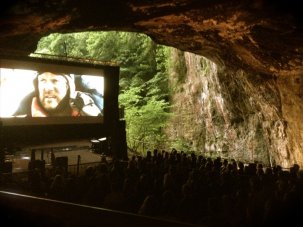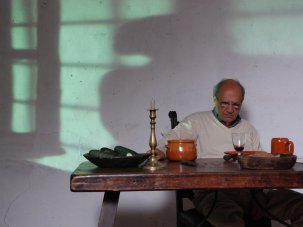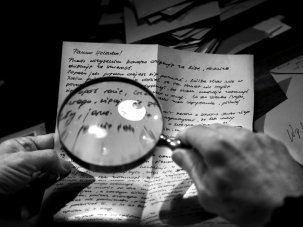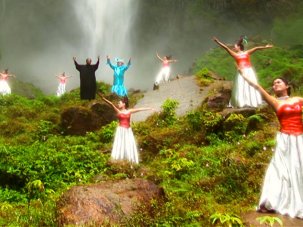Web exclusive

Ben Russell’s Let Us Persevere in What We Have Resolved Before We Forget
From Peter Watkins’s slippery docudrama to more recent art-docu-hybrid experiments such as Clio Barnard’s The Arbor and Ben Rivers’s Two Years at Sea, British film has a long tradition of interrogating documentary. Worldwide, there are many small festivals which do such a thing, foregrounding formally and conceptually adventurous approaches to filming reality. Spain has Punta de Vista and Play-Doc. In the US, there’s Missouri’s True/False festival as well as MOMA’s Documentary Fortnight. France has Cinema du Réel and FID Marseille. (And the list goes on – see Doc Alliance.)
|
FID Marseille |
Yet there’s nothing comparable in the UK. While there may be strands in British documentary festivals dedicated to ‘hybrid docs’ (at this year’s Open City Docs Fest), a curious and ambitious curatorial focus which maps and challenges the non-fiction form is sadly missing from our festival landscape.
What’s interesting about FID Marseille – this year in its 24th edition – is that it doesn’t just do the whole where-fact-and-fiction-collide thing. Under director Jean-Pierre Rehm, the programme has one of the most expansive perspectives of all the progressive documentary festivals, with artist’s film and video, documentary and fiction film all commingling. The summer festival rat-race is not for Rehm who, rather than look to larger events for titles, mines the edges of cinema and art for new or under-appreciated voices. The festival’s juried competitions may be its only concession towards convention. Throughout the programme short, medium and feature-length fare rubs shoulders, as do emerging and established filmmakers, their creations as likely to be called ‘gestures’ or ‘disruptions’ as they are ‘films’. Even FIDlab, where directors pitch prospective films in the hope of funding, stands apart from the normal rigid industry formula: participants have 25 minutes to showcase their project (as opposed to the standard 10-15), and the presentations can take any form.
Emerging and established filmmakers rub shoulders, their creations as likely to be called ‘gestures’ or ‘disruptions’ as they are ‘films’
The retrospective meanwhile is not a cordoned-off area of history, but a constellation of old and new. (This year a tribute to Pasolini was accompanied by films from Jem Cohen, Manoel de Oliveira, Alexander Kluge, Djibril Diop Mambéty and Lav Diaz, to name just a few.) This so-called sidebar actually encompassed five thematic strands which dominated the programme, and neatly encapsulated the festival’s ethos, which emphasises not just the selection of interesting films but also the framing of them in novel and unexpected ways.
As might be expected of the competition slate, genre-tampering, aesthetic experiments and cine-puzzles loomed large. One of the most intriguing and peculiar offerings came via Ben Russell and his brew of ‘psychedelic ethnography’. Let Us Persevere In What We Have Resolved Before We Forget dropped us in the remote Pacific island of Tanna for a 20-minute fragmentary, phantasmagorical tour, swapping the tropes of anthropological filmmaking for subjectivity and strangeness. Channelling a mixture of Apichatpong Weerasethakul and Jean Rouch, Russell (with Ben Rivers as his co-pilot) films tribesman talking in Beckettian tongues while abstract vistas of steaming volcanoes and a recurring image of a child lying motionless on the ground bring a sense of unease to the exotic locale.

Travis Wilkerson’s Los Angeles Red Squad
Other formally innovative films weren’t always as uniformly satisfying. Travis Wilkerson’s treatment of still images (portraits and architectural snapshots all dissolving into each other in a sort of anti-agitprop palimpsest) stood out in Los Angeles Red Squad, his essay uncovering the brutal police suppressions of union workers and communists in 1930s Los Angeles. But the film soon lapsed into a lecture, relying too heavily on a long list of text detailing the squad’s activities (the dispersals of meetings, arrests, violence) to decry the scale of this meditated pre-McCarthy witch-hunt.
Interspersed throughout was footage of Los Angeles 80 years on – empty and standardised car parks, pavements and malls – as Wilkerson decries the legacy of the winning capitalist side. The impact of this sundered future may have dwindled as the screen, full of text, was reduced to an archival document – but as the first instalment in a trilogy on the American police, the film leaves you keen to see what Wilkerson will unearth next.
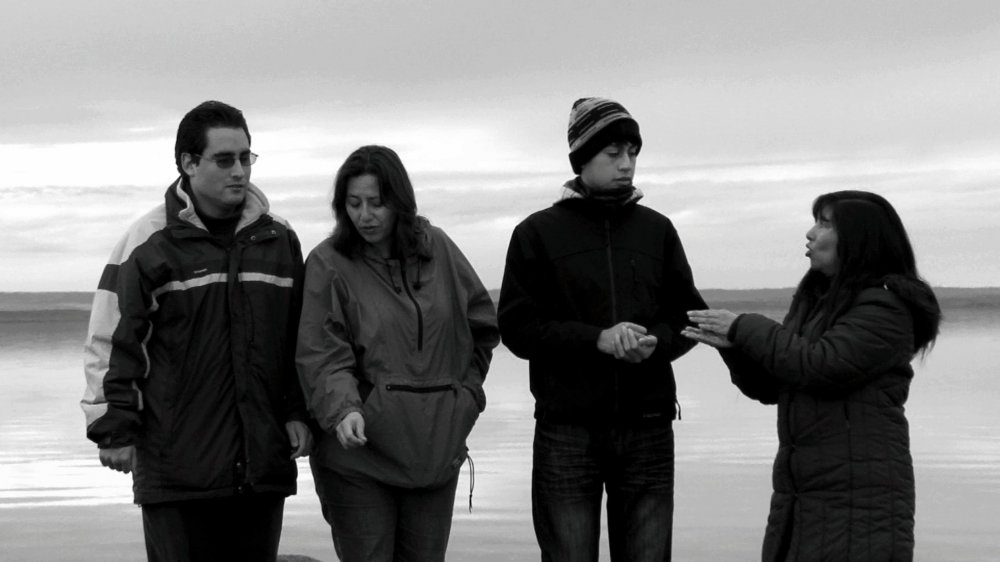
José Luis Torres Leiva’s Ver Y Escuchar
Not all the films refused straight, interview-based or observational modes. Of those that embraced them, marginalised or little-known communities and individuals were the focus: Polish farmers rebelling against impending ruination from nearby industrial farms and an encroaching shale gas company in Lech Kowalski’s protest Holy Field, Holy War, or the deaf and blind subjects of Chilean director José Luis Torres Leiva’s Ver Y Escuchar (To see and to listen). Indeed, the latter’s solarised, cacophonous interludes proved no match for actual testimonies in conveying the interviewees’ experiences of the world. One of the most memorable scenes of the whole festival involved a man who can determine only light and shade recollecting his first sight of the moon at the age of six, in the midst of a city-wide blackout.
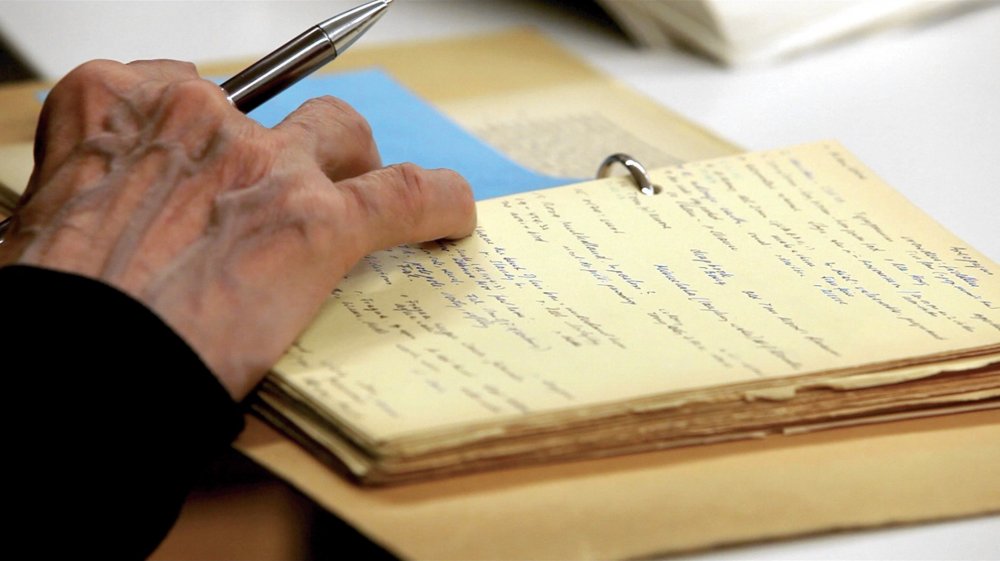
Dora Garcia’s The Joycean Society
For humour and a musing on linguistics and literature (how often do those two collide?) we only had to look to Spanish artist Dora Garcia’s The Joycean Society. Garcia eavesdrops on a reading group of 17 wordsmiths who meet every week in Zurich to unravel the knotted neologisms of Finnegans Wake. No sense of the book’s wider plot or context is given – it’s straight to page 212 to ponder Joyce’s dream-speak (which receives rather dirty interpretations from one member) while Garcia’s camera takes in the baffled silences, furrowed brows and scribbles in the margins. Her surprising, charming film is as much a homage to the group’s dedication (11 years on, they are in the midst of their third lap of the tome) as it is a salute to Joyce’s destruction of language.
Meanwhile the cool, faux-objective gaze of Direct Cinema received a twist in Shaina Anand and Ashok Sukumaran’s collaboration with Indian cargo sailors, From Gulf to Gulf to Gulf. The mariners’ journeys across the Arabian sea to Pakistan, Somalia and the Persian Gulf aboard wooden boats loaded with everything from livestock and cars to boxes of pasta were not only recorded by the filmmakers but also by the sailors on their mobile phones.
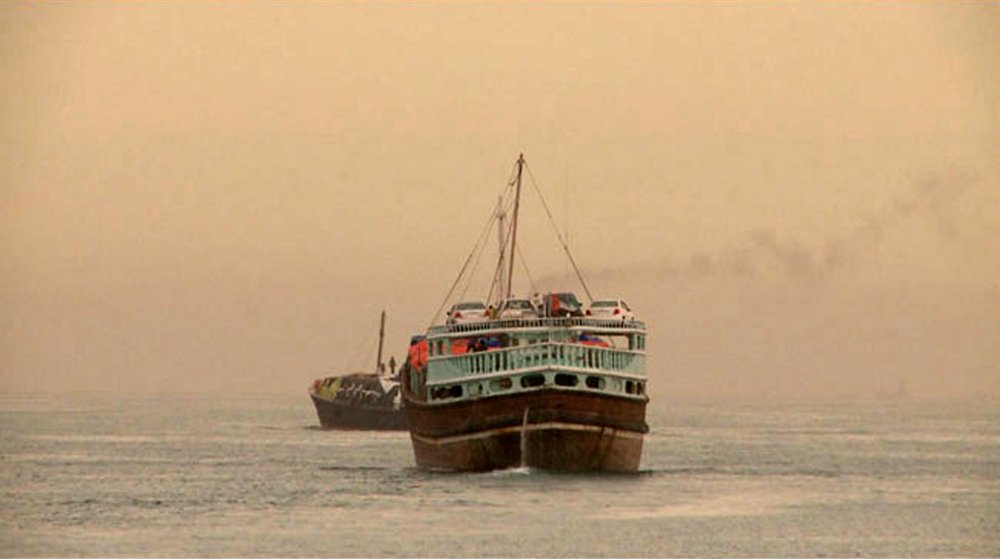
Shaina Anand and Ashok Sukumaran’s From Gulf to Gulf
Meals on deck, packed hulls, the hive of Dubai’s port in the shadow of its gleaming towers, dolphins, boats on fire, shipwrecks – everyday life aboard these precious vessels is intimately detailed in grainy footage, and serenaded by the sailors’ choices of soaring Bollywood ballads of lust and woe. This singular self-portrait-cum-sea-shanty was one of the most delightful and imaginative finds of the festival; a cinema looking over Marseille’s grand old port proved a rather fitting home for it.
Marseille’s coastal location, its long history as a gateway to France and Europe from Africa and as a city of exile for its many inhabitants chimed with another film in the programme – Mati Diop’s much-anticipated Mille soleils (A Thousand Suns), an epilogue of sorts to her now-deceased uncle Mambéty’s ground-breaking 1973 Senegalese road movie Touki Bouki. Mambéty’s restless young lovers Mory and Anta may have dreamt of the riches and heady times awaiting them in Paris (hypnotised by Josephine Baker’s song about the city which encircles the film’s soundtrack) but Marseille is where their boat would have docked.
Mory, of course, in that film’s final scenes, turned back while the ship sail off with Anta onboard. Diop returns to Dakar 40 years later to discover what happened to Magaye Niang, who disappeared from cinema after that one performance. Yet this isn’t an ordinary, interview-based coda, more a film that is suspended between Mambéty’s fiction and Diop’s.
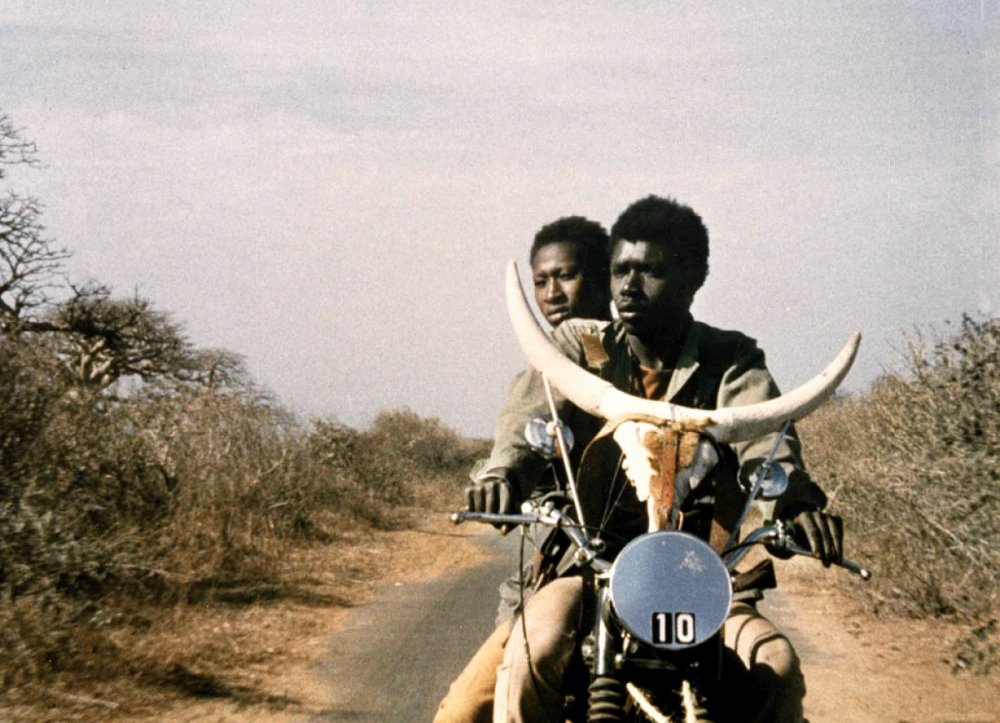
Touki Bouki (1973)
The song that haunts Mille soleils is The Ballad of High Noon, reportedly one of Mambéty’s favourites. “Do not forsake me, O my darlin”, Tex Ritter pleads as Magaye wanders into the opening credits and through Dakar’s heaving streets with his cow herd, just like Mory did at the start of Touki Bouki. It’s as if Anta had really left him all those years ago. Scrounging for money, with his tatty clothes and his wife berating him like Mory’s onscreen mother did 40 years back, there’s little to separate him now from the character he played, apart from the fact that he’s thrown out the horns that adorned his beloved motorbike in the film. How much of this footnote is real or concocted we wonder, as Magaye presents an outdoors screening of Touki Bouki, then later tries to call up Anta (whose fate I won’t spoil) as if her character hadn’t lived for just 95 minutes. Whether the distant voice on the end of the line is that of actress Marème Niang (who, although she shares the same surname, is no relation to Magaye), we never know.
Films about and within films are a stalwart of the FID programme. (This year’s self-reflexive offerings included Pere Portabella’s imaginative use of Jesús Franco’s Count Dracula cast and crew in Vampir Cuadecuc, a political take on Stoker’s tale filmed during the shooting of Franco’s film; as well as Jean-André Fieschi’s 1981 video conversation with Jean Eustache about Fieschi’s next film project.)
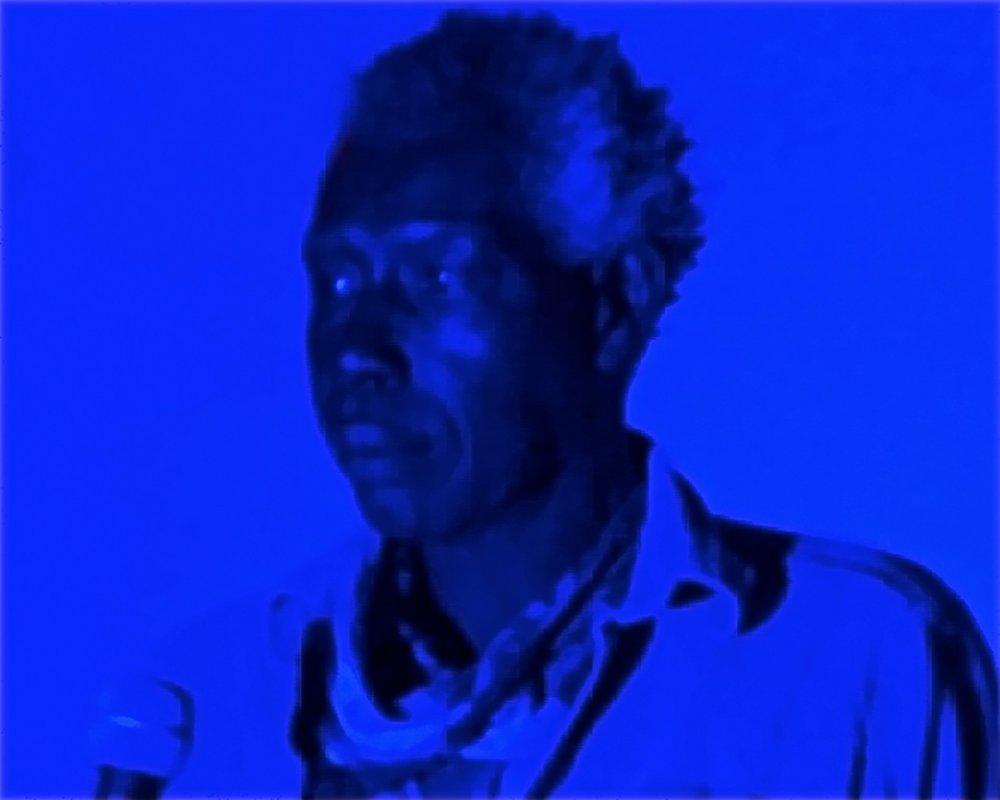
Mati Diop’s Mille soleils
Diop’s fantasy documentary, which claimed the jury’s prize, was far more evasive and inventive than, say, Jean-Marc Lamoure’s shadowing of Béla Tarr on set of The Turin Horse. For all the deliberate echoes of Mambéty’s film (particularly the all-pervasive sense of longing), Diop has her own style: her film is nocturnal rather than sun-scorched like Touki Bouki. Some of her magical-realist touches might not possess the strangeness and ambiguity of Mambéty’s, but she doesn’t just riff on his film nostalgically, rather exploring the political situation in Dakar now and critiquing the hedonism of 1970s youth, Touki Bouki’s protagonists included. As her camera imaginatively captures a younger audience watching Mambéty’s film, their shadows mingling with Mory’s figure as he runs for the boat, her film testifies to its predecessor’s staying power and the spell of faraway lands which still grips a younger Senegalese generation.
Mambéty once stated that the characters in his subsequent 1992 feature Hyenas – a wealthy woman who revisits her home village and the shopkeeper who abandoned her – were versions of Mory and Anta later in life. While Diop imagines the end of the road in Mille soleils, she also crafts a love letter: a contextualisation and tribute of the sort often made in homage to canonical American and European films, but which African cinema rarely receives.





